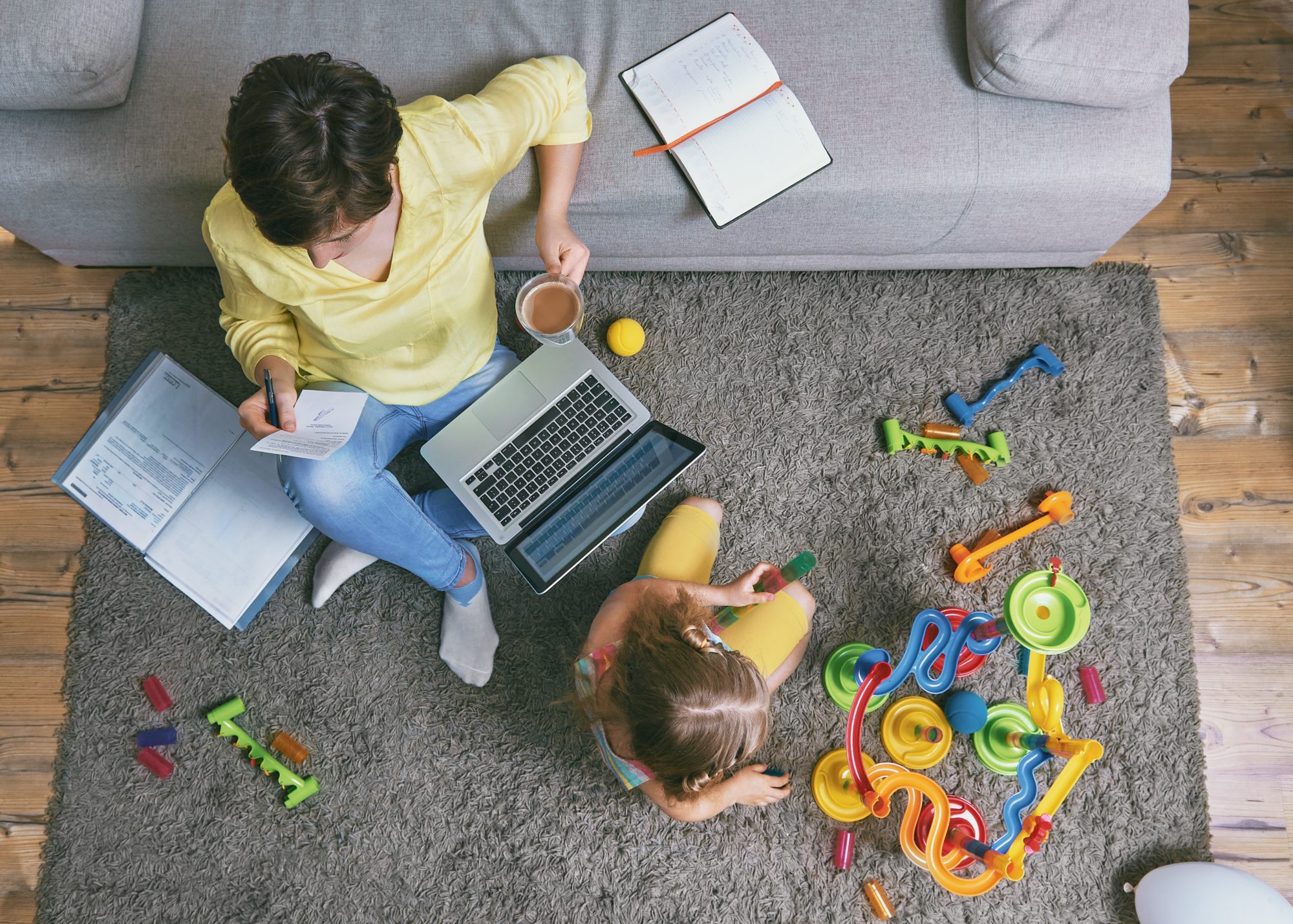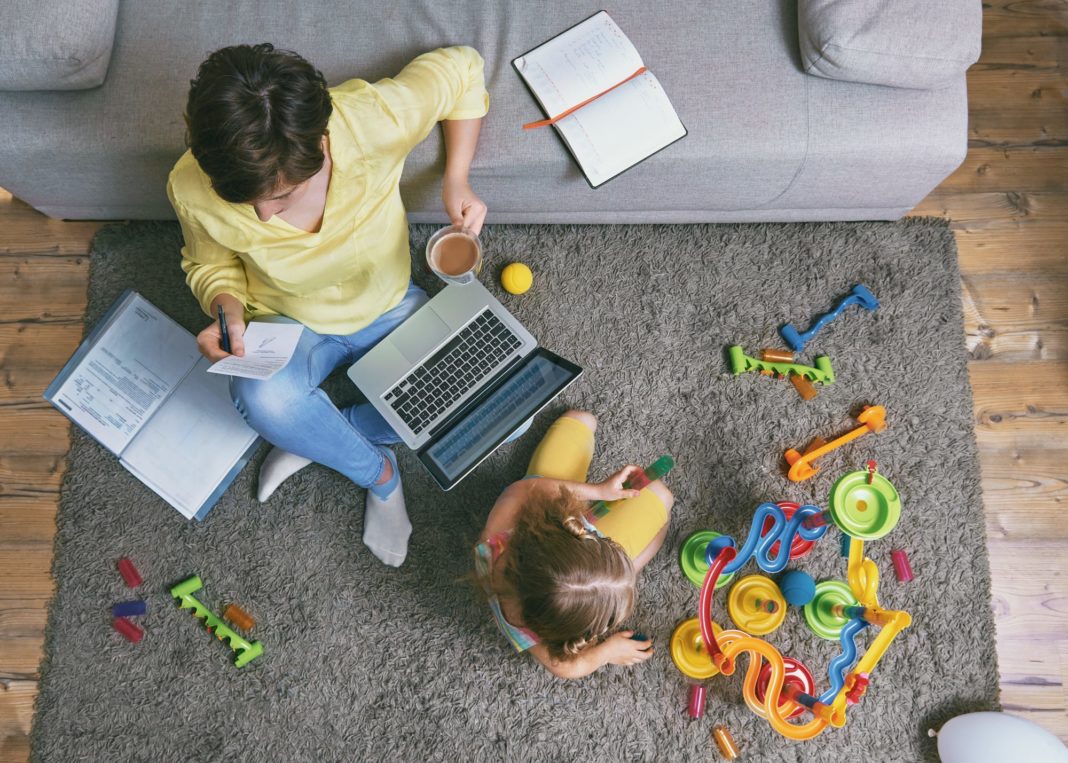
At one point during the early part of the pandemic, nearly everyone I knew was home with their kids. Except for the essential workers, we learned to work from home and parent while working—or failed trying. Slowly, daycares and some schools started to re-open, and parents were faced with only bad choices: send unvaccinated kids to daycare in order to go back to work; keep kids home, making it difficult to get work done; rely on alternative forms of childcare; or leave the workforce entirely.
My own decision came down to what felt like a triage of needs: I worked significantly less as a result of the pandemic and took on more of the childcare than I had before, when I had a kindergartner and a preschooler both in full-day school. When trying to facilitate distance learning for my daughter wasn't working with her brother at home, we decided to send our son back to preschool, pay the tuition, and keep me home to care for my daughter. While my friends supported my decision, almost none sent their kids back to preschool and daycare. For some, it was a safety concern. For others, it was a financial choice in the wake of the way the pandemic has affected working parents' ability to earn an income.
Financial ability
No matter what decision families made, money came into play, either as a primary or secondary reason for keeping kids home or not. Some parents simply couldn't afford to send kids to daycare due to loss of income.
Mom's Hierarchy of Needs, a community for mothers seeking self-care, conducted an anonymous survey with over two thousand responses, getting data about parenting during the pandemic, including regarding daycare disruption. Several parents cited financial reasons for stress during the shutdowns. Specifically, one mother of two sums up a problem several families faced when she says, "I had to quit my job because they wouldn't allow working from home, and childcare expenses would have actually caused me to spend more than I was making in salary."
Of her own situation, Leslie Forde, founder and CEO of Mom's Hierarchy of Needs, tells Parents the pandemic forced her out of her work-life comfort zone (no surprise there). "When our nanny wasn't available (we had a couple of months like this), I got very creative, including taking calls from the playground and giving my kids screen time credit for helping with laundry," Forde explains. When she could, though, Forde ended up paying the nanny more than she otherwise would, since her kindergartner was now home and not cared for in school. "The pandemic solidified my decision not to rely on school as my primary childcare," Forde explains.
Financial benefit
Some parents are choosing to save money otherwise spent on daycare—and have come up with a childcare system outside of formal schooling.
The pandemic solidified my decision not to rely on school as my primary childcare.
A poll conducted by OnePoll on behalf of SitterCity—a website that helps parents match up with babysitters—revealed that, of the 2,000 families polled, 13% claimed not to have support options when it came to finding childcare. They were on their own. Of the remainder that did have support, more than half said they relied on a spouse or other family member for care. This meant they also had money, often thousands of dollars a year, that was not going to childcare and could be used for other purposes.
A friend of mine successfully kept her kids out of school for the 2020-21 school year by sending them to stay with their grandparents for half the week every week. I was jealous, I'm not going to lie, that she and her husband got to have three nights a week without the pitter-patter of little distractions—and without the hefty price tag of daycare.
Dave Heinzinger, vice president of Haymaker and dad to two young daughters, ages five and two, has also been making it work without daycare or school. "Our situation has changed not necessarily because of COVID safety, but because work-from-home is so beneficial for people like us with young kids," Heinzinger tells Parents. His wife is a ballet teacher, and they have been splitting parenting shifts to accommodate each other's work schedules. Instead of commuting to and from New York City for multiple hours a day, he now provides childcare during his wife's classes and while his younger child naps. His wife covers other times so he can work. Not only is his family being more efficient with time; they are saving money on transportation and childcare.
Arkansas-based psychiatrist Rhonda Mattox, who is a mom to a 10-year-old, took another non-conventional approach. "During the pandemic, it didn't make sense to pay (thousands) of dollars for private school and still have to keep my child home with me while still being responsible for a great deal of her education," Mattox tells Parents. "So I shifted my psychiatric physician practice from clinic-based to exclusively telemedicine. We pulled the little one out of the physical school building. Out of necessity, we shifted her away from the traditional schooling approach per the surge in COVID-19 in our state and pivoted to unschooling to accommodate her proverbial kicking and screaming and our professional responsibilities." Her daughter ended up returning to virtual school this fall, but their family made their creative solution work for them for the past year and a half—and saved money doing it.
Child care center repercussions
As a result of kids being out of care, child care facilities are feeling the effects of the virus on a financial level. Winnie, a site dedicated to helping parents find daycare and childcare, conducted a survey of 1,000 childcare providers and said that, compared with before the pandemic, the percentage of centers with open spaces doubled, especially in larger cities such as Seattle, San Francisco, Chicago, and Los Angeles. This may be because big cities are where people often live outside of the city where they work, causing them to choose a daycare near their office, not their home.
As a result of kids staying home, many childcare centers have temporarily or permanently closed, creating or worsening places with limited child care options, sometimes called child care deserts. The stress for parents who may want or need coverage increased and sparked the American Families Plan, which aims to help families offset the cost of childcare and eventually create free preschool for three- and four-year-olds, saving the average family $13,000 a year per child.
Looking forward
As students head back to the classroom and daycare or stay home doing virtual school for yet another school year, it looks as though parents are in for another round of choosing between two evils. Many of the child care problems we are seeing as a result of the pandemic were present long before COVID-19 and are only getting attention now because they are finally affecting families of all backgrounds.
Many of the child care problems we are seeing as a result of the pandemic were present long before COVID-19 and are only getting attention now because they are finally affecting families of all backgrounds.
The decision is not easy, and no one can tell you what the right choice for your family is except you. Hopefully, you are able to make a choice based on safety, comfort, and what's best for your child—not based entirely on finances. But that's not the reality for most families, especially as the toll of the pandemic continues to affect not only our health, but our lives and livelihoods as parents as well.


































